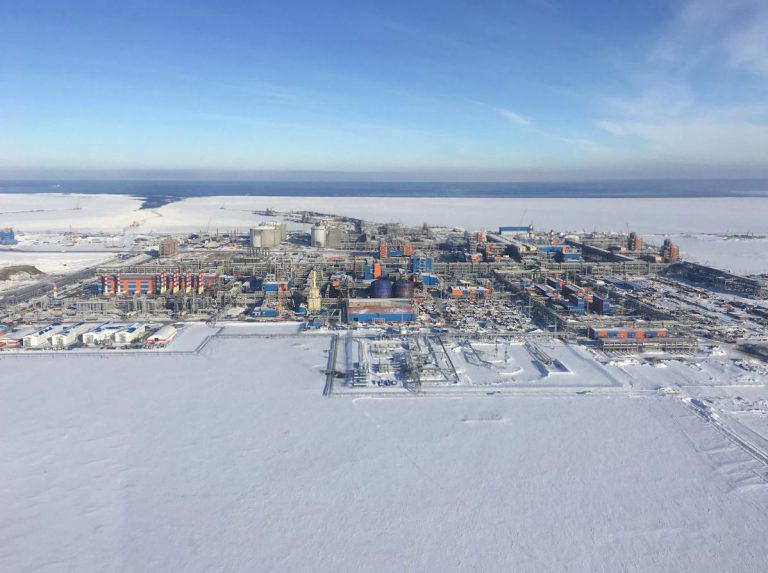
Novatek, the pioneer of Russian LNG in the Arctic, has started commissioning activities on the first liquefaction unit, and the company announced the train will be put into production by December 2017, when the first carrier is scheduled to be delivered to international markets.
The first train (there are a total of three trains at Yamal LNG) will have a capacity of 5.5 million tons of liquefied natural gas, once in full production. The second train is scheduled to start up in 2018, and the third in 2019. When all three trains are active by 2019, the operation will have a capacity of 16.5 million tons of LNG.
The three-train Yamal LNG plant sources natural gas from the South Tambey field on the Yamal Peninsula in Russia’s West Siberia, and the liquefies the gas, and ships it off by boat.
In the short term by 2025, once Novatek’s projects Yamal LNG (16.5 million tons) and Arctic LNG 2 (16.5 million tons) reach full capacity, the company predicts Russia will be the world’s 5th largest producer of LNG. The Arctic LNG 2 project, located on Russia’s Gydan Peninsula, is slated to be completed by 2023. Through auctions and licencing awards, Novatek has amassed a significant amount of bloc holdings in the Russian arctic, which will enable the company to start and complete several more projects like Yamal and Arctic 2.
In the long term, Novatek has ambitions to topple Qatar as the largest LNG producer worldwide (Novatek has said it plans to be producing 100 million tons of LNG in the near future).
Novatek’s plans are not limited to the Arctic. Just recently the company closed a deal to acquire 51% of Gazprombank’s shares in the Cryogas-Vysotsk project in the Baltic Sea. The project includes the construction of an LNG plant with 660,000 tons of capacity per year, as well as an export terminal in the Vysotsk area on the border of Russia and Finland. This project will help Novatek break into LNG marine fuel market. On July 14, a subsidiary of Novatek Gas and Power joined the Society for Gas as a Marine Fuel (SGMF) and SEA \ LNG, an industry coalition that lobbies for LNG as a marine fuel. According to SGMF, already 45 ports worldwide are set up for LNG refueling.
